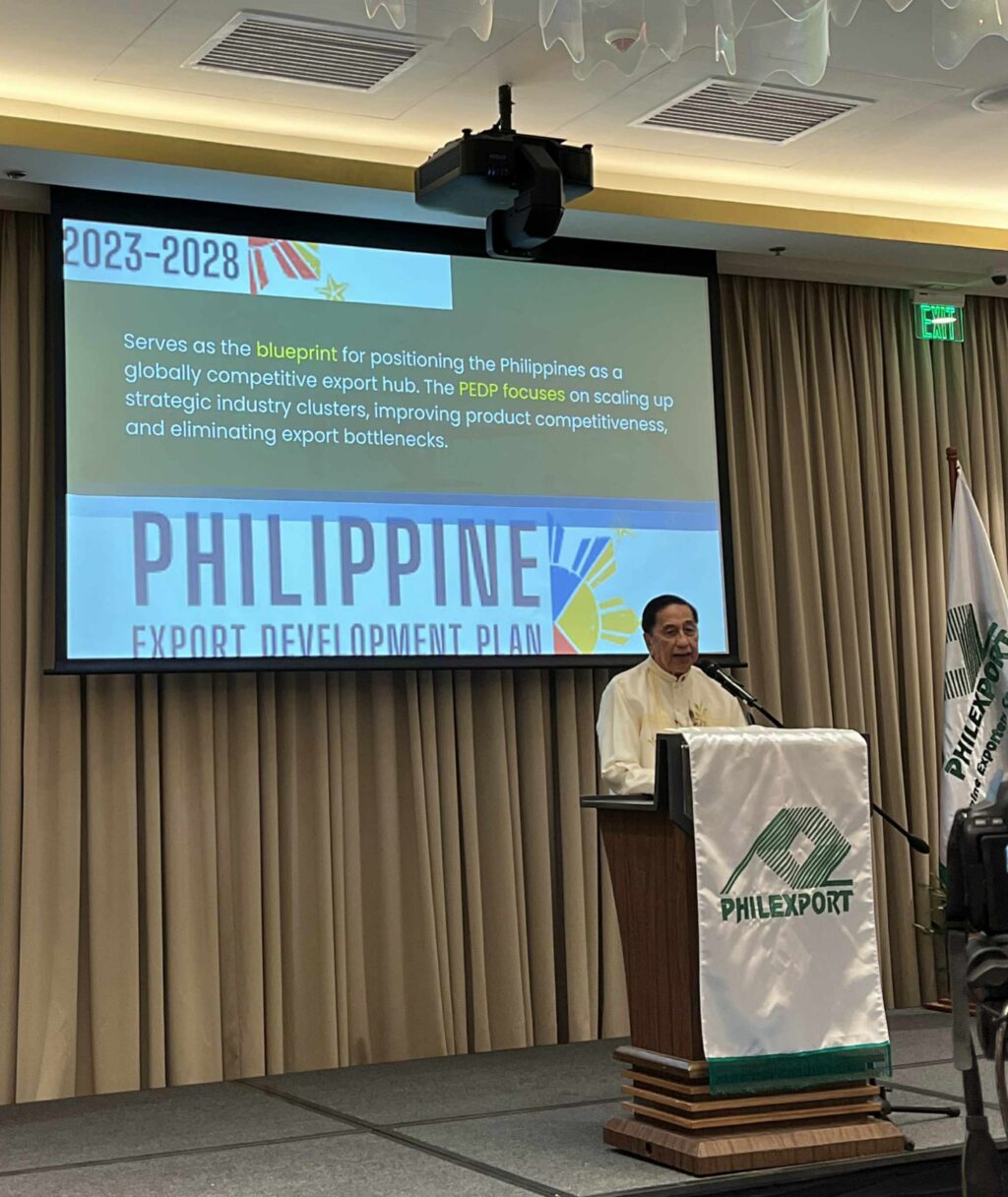
The Philippine Exporters Confederation, Inc. (PHILEXPORT) rallied exporters to take bold, coordinated action toward growth during its 3rd Quarter General Membership Meeting.
The meeting gathered around 150 exporters, industry leaders, and government partners committed to advancing the Philippine export agenda.
PHILEXPORT President and CEO, Dr. Sergio R. Ortiz-Luis Jr., concurrently the Vice Chair of the Export Development Council (EDC), challenged the export community to “forge, not find, the silver bullet for growth.”
He outlined five key drivers that can strengthen the Philippines’ global competitiveness and help exporters seize new opportunities despite a challenging trade environment:
(1.) Product Competitiveness – Prioritize quality and innovation through ISO certification support, export-quality compliance grants for SMEs, and industry-specific R&D tax incentives;
(2.) Market Intelligence – Leverage real-time customs and demand data, export readiness analytics, and tailored market entry reports to target and sustain export markets;
(3.) Digital Enablement – Scale up cross-border e-commerce via the National e-Export Platform, adopt digital trade finance, and promote paperless customs processes and digital certificates of origin to lower costs and expand reach;
(4.) Trade Facilitation – Streamline shipment processes through electronic single window systems, risk-based inspections, and harmonized regional standards;
(5.) Public-Private Collaboration – Strengthen mentorship programs linking SMEs with large exporters, foster government-industry-academe partnerships, and improve access to targeted export financing such as pre-shipment guarantees.
Discussions centered on the Philippine Export Development Plan (PEDP) 2023–2028, the national roadmap to position the country as a globally competitive export hub.
“The PEDP focuses on scaling up strategic industry clusters, improving product competitiveness, and removing export bottlenecks,” said Ortiz-Luis. “Exporters can expect more focused government support through firm-level interventions, enabling policy reforms, and tailored programs that align businesses with international market demands.”
[full article courtesy of Export Development Council via its official e-newsletter, iNFORMS]


